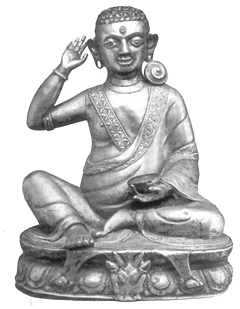“Deep hearing, then, is not just an auditory sensation, involving the ear, but a matter of the whole . ‘Deep hearing of the Dharma’ means embodying the Buddha Dharma, an experiential awakening of the total self, conscious and unconscious, mind and body.”

One specific method for practicing mindfulness of body sensations is to focus your attention on sounds. Sounds, like everything else, arise and pass away. Just by listening, you can experience the insight of impermanence, an understanding the Buddha taught as crucial for the development of wisdom.
Early morning is great for listening. Sounds start to slip into the stillness. In a rural setting, the sounds are likely to be those of birds and animals waking up. In a city, sounds of outside action begin-garbage collection, building construction, traffic. Even in the rarefied air of a high-rise hotel room, plumbing sounds and elevator sounds and footsteps in the hall pick up in pace.
Sit in a position in which you can be relaxed and alert. Close your eyes.
The stillness of your posture and the absence of visual stimuli both enhance hearing consciousness. People are sometimes surprised to discover how much sensory consciousness gets lost in the shuffle of distracted attention.
After your body is settled comfortably, just listen. Don’t scan for sounds; wait for them. You might think of the difference between radar that goes out looking for something and a satellite dish with a wide range of pickup capacity that just sits in the backyard, waiting. Be a satellite dish. Stay turned on, but just wait.
At the beginning, you’ll likely find that you are naming sounds, “door slam … elevator … footsteps … bird … airplane … ” Sometimes you’ll name the feeling tone that accompanies the experience: “bird … pleasant … pneumatic drill … unpleasant … laughter … pleasant … ” After a while, you may discover that the naming impulse relaxes. What remains is awareness of the presence or absence of sounds: “hearing … not hearing … sound arising … sound passing away … pleasant … not pleasant.”
Think of your listening meditation now as a wake-up exercise for your attention. However it happens-with names, without names, with feeling tone awareness or without-just let it happen. Don’t try to accomplish anything. Just listen.
♦
Thank you for subscribing to Tricycle! As a nonprofit, we depend on readers like you to keep Buddhist teachings and practices widely available.
